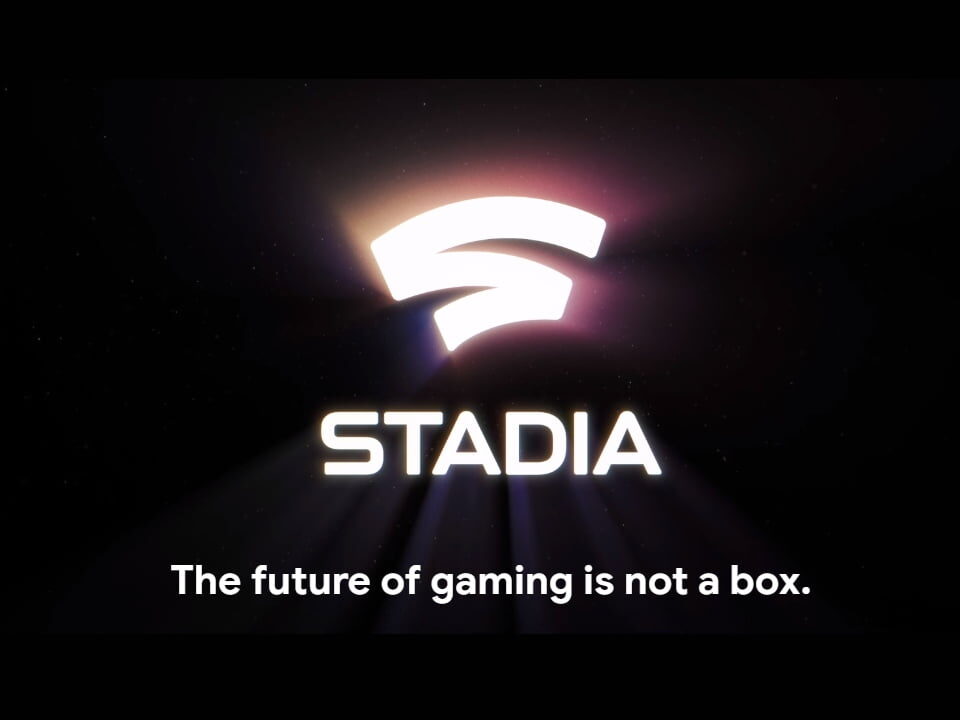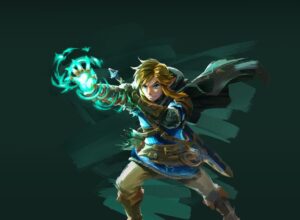Google takes aim at the home console market with its streaming service, Google Stadia.
This morning – well, this afternoon in Europe – at the Game Developer’s Conference, in a typically slick presentation, Google CEO Sundar Pinchai introduced the world to Google Stadia. It might sound like a silly name, but it’s called Stadia after the human compulsion to come together to play together. You know, football, basketball, rounders, feeding Christians to lions, volleyball – classic stadia-based activities.
Following their public beta test last autumn, where US players got to take on Assassin’s Creed Odyssey via their Chrome browser, Google has moved ‘Project Stream’ – as it was called – from a concept to reality, now Google Stadia.
During the beta, testers could play Assassin’s Creed Odyssey at 1080p resolution and 60 frames per second. In today’s Stadia reveal, it was announced that the service will support 4K, 60 frames per second, with 8K, 120 frames per second in the works to support the next generation of super high-resolution panels coming to market. Stadia will also support HDR and surround sound.
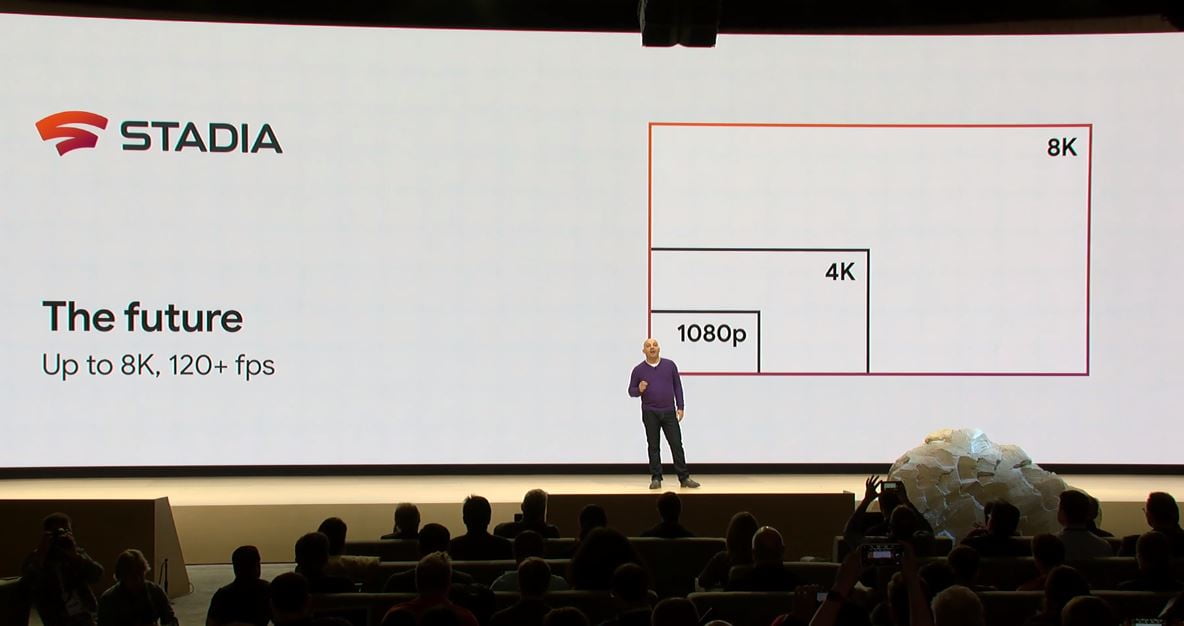
You’ll also be able to stream Google Stadia to pretty much any device you can think of, including laptops, tablets, mobile phones, and TVs (with a Chromecast-alike dongle). Support for streaming to other consoles is to be confirmed, though presumably, that’s in the hands of Sony, Microsoft and Nintendo, not Google.
Stadia will be available with a custom controller, in three pretty colours, but you can play with any controller (or indeed keyboard and mouse) that you have lying around.
All of this is powered by a custom AMD GPU and custom-built hardware specific for the project. The Google Stadia specs include:
- AMD GPU
- 10.7 TFLOP/s
- 56 compute units
- HBM2 memory
- CPU
- Custom x86 processor
- 2.7GHz clock speed
- Hyperthreading
- Memory
- 16GB RAM
- 484GB/s transfer speed
- 9.5MB of L2/L3 cache
For reference, the PS4 Pro delivers 4.2 TFLOP/s, and the Xbox One X can push 6 TFLOP/s. That’s an awful lot of grunt from that custom GPU. But there’s more: Google Stadia GPU/compute instances can be combined for additional performance.
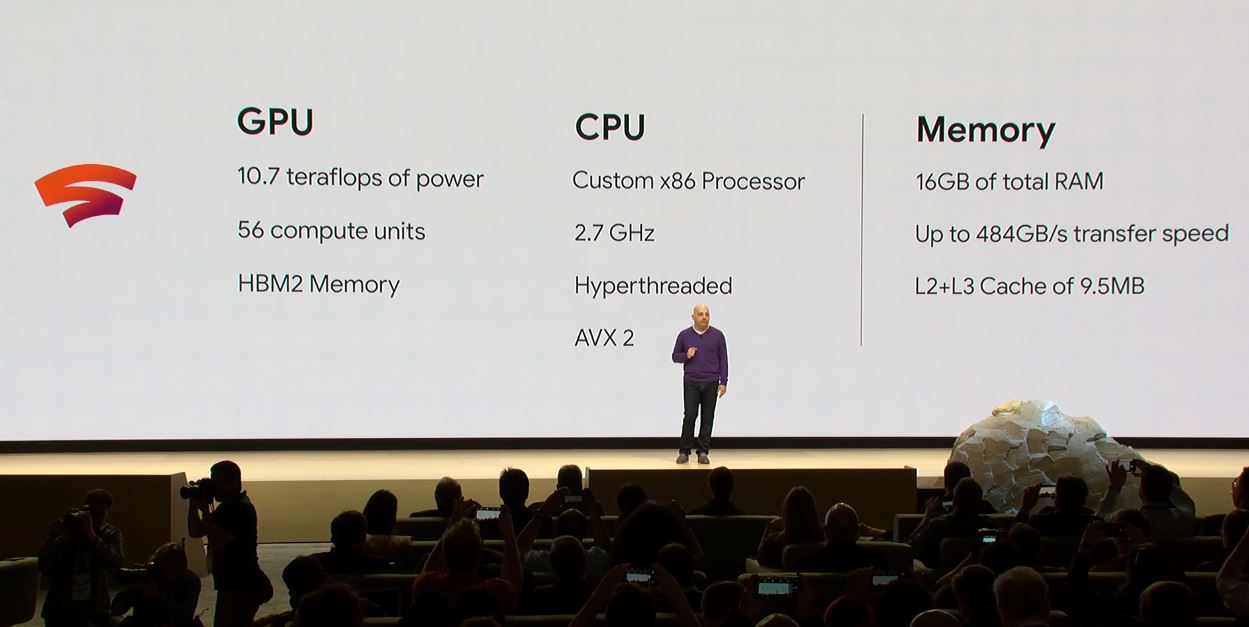
A demo was shown with fluid dynamics, a notoriously computationally-expensive thing to render. But perhaps a more real-world example was couch co-op. Where developers have been dropping splitscreen from games in recent years, citing the graphical fidelity of the experience as the deciding factor, combining the power of multiple Stadia instances will allow for splitscreen, co-op gameplay with no loss in performance.
Assuming, of course, you have the network performance for it.
One elephant in the room was bandwidth. Google was very keen to trumpet the benefits of its low latency, multi-homed global data centre infrastructure, but there was no minimum client-side bandwidth requirement offered during the presentation. In a world with ropey ISPs and players who will want to use 4G mobile data, that’s going to be a crucial factor.
The other elephant was the pricing model. From spending time around the Google Stadia demo area today, this one has developers nervous. Is it going to be an all-you-can-eat service like Netflix? If so, how do the developers get paid? Are you still going to need to buy games? Are you going to be billed by usage? Is it going to be ad-supported? Nobody really knows at this stage, and it was a stark omission from Google’s slick presentation.
So we asked. We spoke to one of the Google Stadia reps about both of these elephants, and were told they have “nothing to announce” on either point.
As for supplying the games – in addition to partnering with Ubisoft on Assassin’s Creed, Bethesda and Id Software on Doom Eternal, and with indies Tequilla Works and Q-Games on unannounced titles – Google is creating its own first-party development and publishing arm to supply Stadia with software. There are also interesting new features, like the ability to jump straight into playing a game from watching a trailer or stream on YouTube.
Performance, price, and software catalogue will be the key test for Google Stadia. Based on an initial hands-on with it today in GDC, Dan told me that the Stadia controllers aren’t available to try. Instead they are “hooked up to Chromebooks with wired Logitech controllers, but it works. Amusing that they have to keep the books open though; someone closed one and the TV went blank.”
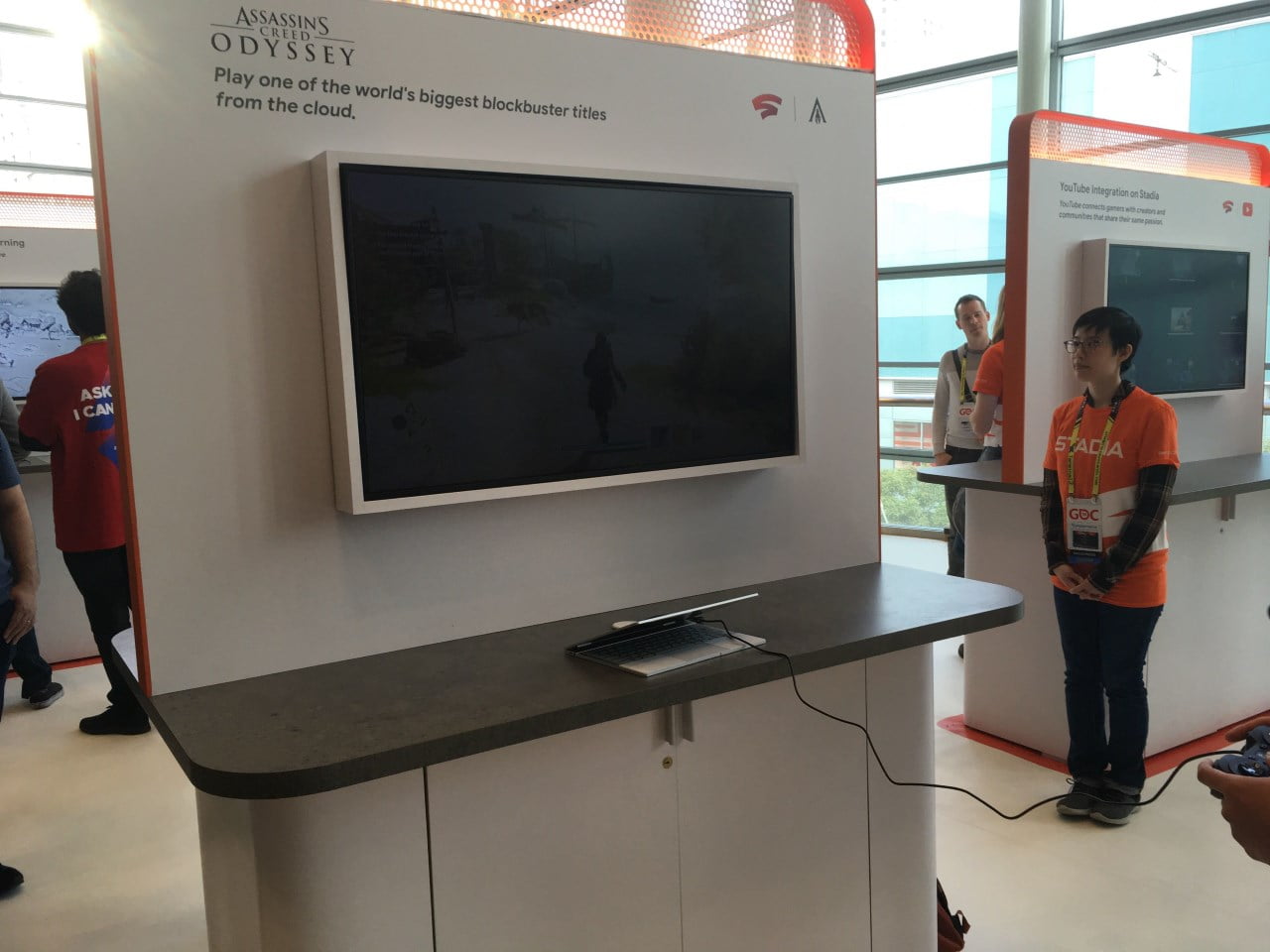
We suspect that’s a limitation of the cheap Chromebook hardware than Stadia itself, but it’s funny to see these little kinks after such a slick presentation.
We’ll find out more about Google Stadia in due course, with a release window of “2019” and more information on that release schedule – including launch titles, pricing models, and presumably, bandwidth requirements – in summer of this year.
